Are you going to teach classics during distance learning like The Giver, The Great Gatsby, and/or The Odyssey? Great choice! Here’s how to make your novel unit even more inclusive and engaging.
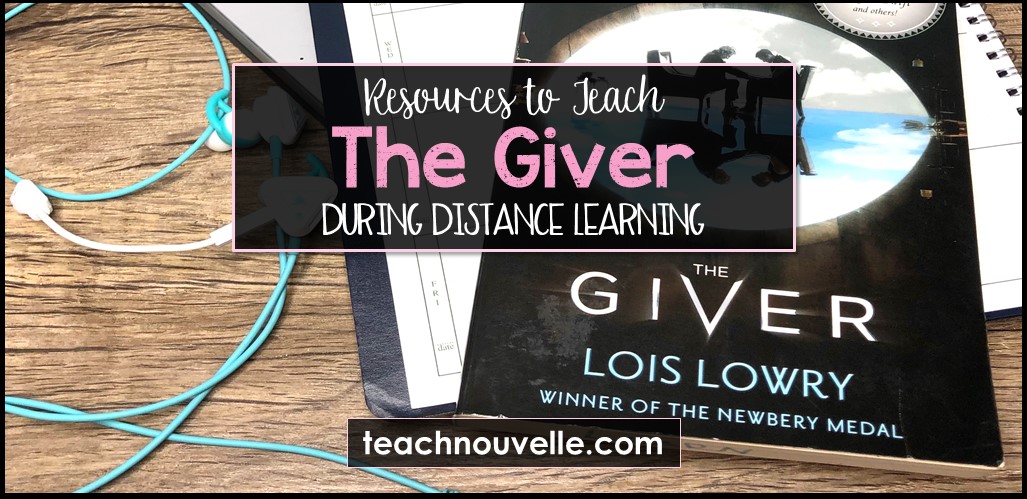
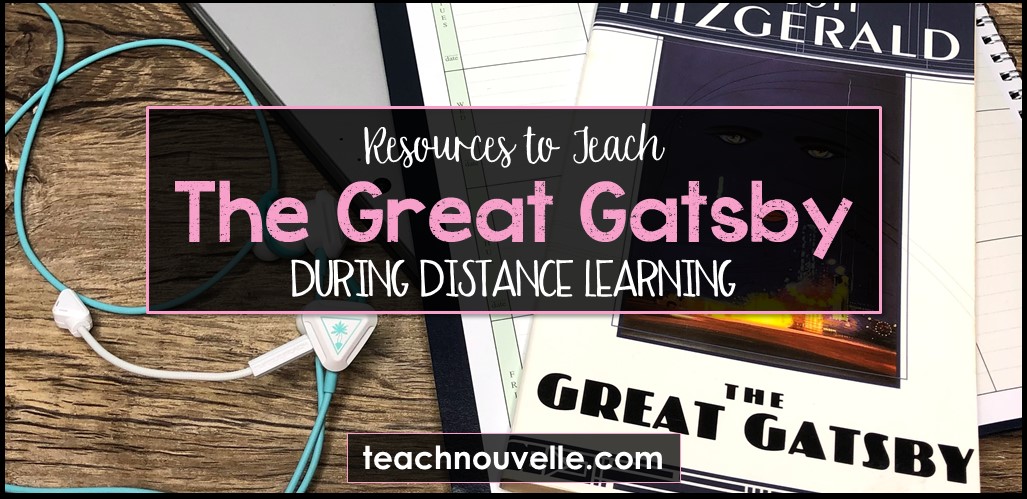
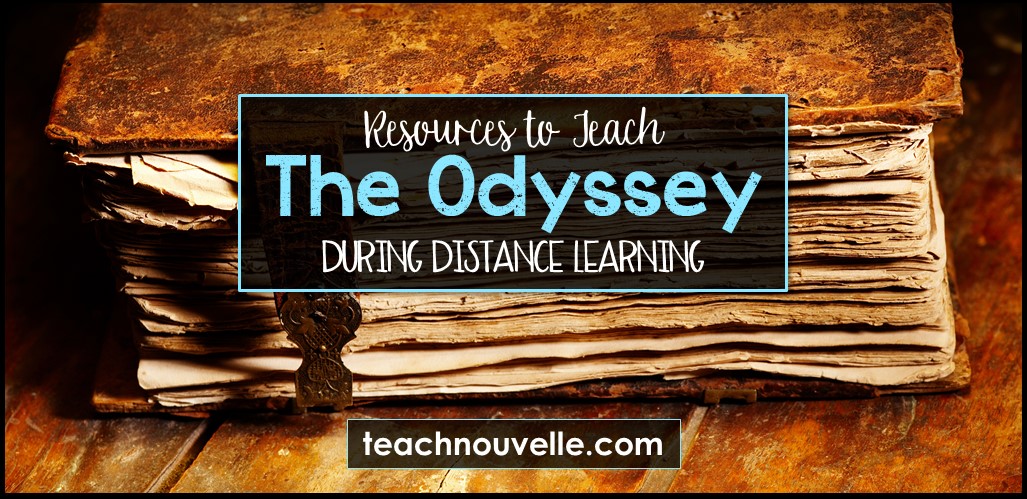
Teaching Classics During Distance Learning?
No matter which text you are working with, below we have provided some resources & strategies to make your unit successful and one to remember!
Considered by many to be a modern classic, The Giver is a brilliant choice for middle-schoolers who will instantly connect with the 12-year-old protagonist, Jonas. Today I’ll be sharing some resources and tips to teach The Giver during distance learning, and also how to bring some diverse voices to the conversation.
The ideas and resources I am sharing today were all hand-picked with distance learning in mind, but you’ll find many more ideas for teaching The Giver in this full Rethinking The Giver resource.
Resources and tips to teach The Giver during distance learning:
Research real-life utopias
Many dystopian settings first appear to be a utopia, so when my 8th graders read The Giver, I have them begin by researching some real-life utopias. We talk about the concept of utopias. Then, we brainstorm what these communities might look like for each of them—what freedoms they’d want to have, or what the ideological goals of their community might be. And of course, we look at utopias that have risen and fallen over during American history.
Read more about this (and find a list of utopias to research) on my blog.
Have students examine how societal rules can help or hurt us
This article summarizes ten (well-intentioned) local laws that most cities and towns have. For example, many communities have laws against jaywalking or building codes that require a certain number of parking spaces for new housing or commercial properties. You can use this article in several ways.
To engage students in prediction, an important executive function, write “jaywalking” on the board and ask students to consider why the laws were put into place. Whom were they made to protect? Whom do they (perhaps unintentionally) disenfranchise or harm?
Have students read the article and choose one law to research further. The article provides several links to sources for each item. Students can return to those key questions (Who is protected? Who is harmed?) and discuss the value of each law. You can also ask students to re-envision the law—what would be a better way to accomplish the same goal for the community?
This activity practices the Social Justice Standard JU.6-8.12 from Teaching Tolerance. Check out the full standards here.
Student-Centered Discussion:
In groups, students identify one law designed to help the community. They identify what behavior the law encourages and whom it protects. Then, they identify an unintended consequence of the law or someone the law hurts. Students find one text (article, speech, poem, etc.) to show the “flip side” of the law. For example, consider a law stating that voting must happen in-person. Students may uncover that legislators meant for it to curtail voting fraud, but that it actually disenfranchises citizens. Because Election Day is not a holiday or on a weekend, many people who work struggle to find time to vote.
Learn about memory
Video: Memory, Explained (20:08)
This fascinating video is one episode in a series that explores how the human brain operates. This episode centers upon one essential question: How does remembering work? It will amaze students to watch memory champion Yanjaa Wintersoul (who holds three world records) in action, while learning about the subcategories of explicit memories (semantic and episodic).
Side note for teachers: At 15:30 (“Eyewitness Identification”), the video discusses a woman who misidentified the person who raped her. It does not go into detail of the incident, but you may choose to skip this part since it may trigger some students. (The “Eyewitness Identification” segment ends at 16:34).
Student-Centered Activity:
After viewing, have students categorize the explicit memories that The Giver shares with Jonas into two categories: semantic and episodic. Then you can have students break off into small groups on Zoom to further a discourse on the implication memories have on emotions, identity, and relationships.
Let students be their own storytellers
One thing we teach alongside The Giver is personal narrative. Models of this can be so fun for students! Here are two of my favorites:
Stand-up Routine: “I Got 99 Problems… Palsy is just one” (14:01)
Actress and comedian Maysoon Zayid shares some of her experiences on the TED stage, but her talk is more like a comedy routine. We like sharing stand-up when discussing memoir because comedians draw most of their inspiration from personal experiences. You can ask students guiding questions about dialogue, characterization, and plot, just as you would when they brainstorm their own narratives.
Content warning: Zayid makes one quick quip about strippers at 3:15. You can skip this. Additionally, she says the R-word, but it is in relating something someone said about her and to her.
Video: “Green Bean Queen” by Faye Lane (5:22)
This is from the storytelling contest, The Moth. (You can find other stories on their YouTube or their website, but you’ll want to preview for content and language.) Faye Lane recounts an experience of an unexpected role in a third-grade play. Ask students to consider how Lane draws in her listener. How does she help us imagine her setting? How does she convey the inner thoughts of her younger self? What lesson did she learn?
For distance learning, have students submit a video of their performance.
Today I’ll be sharing some resources and activities for teaching The Great Gatsby during distance learning. These ideas include videos, nonfiction articles, games, discussion prompts, and more!
I’ve blogged about teaching Gatsby before, but today’s tips are all shared with distance learning in mind. You can find even more ideas for in my full Rethinking the Classics: The Great Gatsby resource.
Expand your students’ background knowledge of the 1920s
This article and close reading questions introduce major social and economic concerns in post-war America. This is perfect for building context before reading The Great Gatsby.
These oral histories of The Great Migration were compiled by students and researchers from West Chester University. Each interview is quite long, but each is accompanied by a transcript. You can play sections of them for students. You can also have students listen to one in small groups and then choose a 5-minute portion to share with the class.
Symbolism in The Great Gatsby
The symbolism of Gatsby’s mansion is one of the most prominent themes in The Great Gatsby. In this article Rosalyn LaPier, a Native scholar of environmental history, explains the significance of sacred places in Native American religions. This is important background knowledge to understanding the fight to protect Standing Rock, a fight that exemplifies the symbolism and importance of Place. You can also check out the documentary Awake: A Dream from Standing Rock for a more in-depth exploration of this topic.
Using Gatsby to talk about wealth disparity
Scholars often interpret Gatsby’s transformation from a Midwest farm boy of modest means to wealthy playboy as Gatsby embodying “the American dream.”. But for many Americans, that dream was out of reach in the 1920s and remains equally distant today. Wealth inequality is a complex issue, but one of the biggest factors is race.
According to this CNN Money video, Blacks make up about 1.7% of the top 1% richest people in the United States. Journalist Tanzina Vega explores the systemic racist practices that prevent Black people from accumulating wealth. She also interviews Black members of the 1% who are working to change that.
Try a digital breakout!
My new Harlem Renaissance Digital Escape Room is perfect to pair with, or prepare for Gatsby. Students will read and answer questions about leaders of the Harlem Renaissance, all while collecting clues to unlock a secret message. This is one of my favorite games I have ever made, thanks to the fabulous art from Lily Chan.
Are your students struggling to connect with The Odyssey? I get it. Somehow “It’s over 3000 years old!” isn’t a significant selling point for teens and tweens. Today I am going to be sharing resources to help with teaching The Odyssey during distance learning.
Teaching The Odyssey during distance learning
While the literary merits of The Odyssey are timeless, it’s not very inclusive. I’m not suggesting that you remove it from your curriculum, but that you bring in some additional voices. Contemporary supplemental texts will not only make your lessons more inclusive, they will help students to connect with the original story.
Many teachers are working to diversify their curriculum to include more voices. I’ve been working with Dr. Sheila Frye (from Teaching Literacy) on a project called “Rethinking the Classics” to help teachers find supplemental texts and curriculum updates. So far, we have covered The Giver, To Kill a Mockingbird, The Outsiders, Romeo & Juliet, and The Great Gatsby, and we have many more to come. (Do you have a specific required text that you’d like to make more inclusive? Reach out to me @nouvelle_ela and I’ll see if I can help 🙂
Here are some ideas to get started, and you can find many more ideas in our full Rethinking The Odyssey resource.
Play a game!
I recently redesigned my Odyssey escape room and created a digital version that is perfect for teaching the Odyssey during distance learning!
Note: If you decide to purchase this resource, you will get both the paper version of the escape room, and the digital breakout.
Explore “What makes a hero?” in two steps
Y’all, I love teaching about superheroes so much that I dedicated a whole blog post to it! It’s such a engaging topic for students.
Step 1.
You can begin your discussion on superheroes by having students watch this short video from TED. It provides a quick introduction to the hero archetype as outlined by Joseph Campbell.
After viewing this video, students could map out Odysseus’ journey and compare it to Campbell’s framework.
Step 2. Compare and Contrast With a Contemporary Hero
Another way to help students connect to The Odyssey is by comparing it to the “hero’s journey” of a text that they already know and love. After they have completed step 1, they could take their favorite superhero origin story and see how well it lines up with that of Odysseus.
Here are some of my favorite superheroes to share with students:
Ms. Marvel by G. Willow Wilson
Teenager Kamala Khan is the first Muslim-American superhero. But she really doesn’t think she should be one… this comic book is great for igniting a discussion on what makes a hero. You can listen to the YA Cafe Podcast episode on book 1 for teaching ideas and learn more about incorporating superheroes in ELA at this blog post.
America Vol. 1: The Life & Times of America Chavez
Chavez is Marvel’s first queer, Latina superhero, so she has a unique story. The graphic novels also feature stunning artwork by Joe Quinones, which is sure to engage even the most reluctant readers.
I highly recommend Gabby Rivera’s TED Talk, which I included in my TED Talks for Young Writers blog post. Rivera talks about how as a child she had a hard time identifying with superheroes, saying, “I looked at them, and I saw everything I wasn’t. They had big muscles, supermodel good looks, and phenomenal cosmic powers. And me?… I never felt powerful.”
Miles Morales: Spider-Man by Jason Reynolds
Miles Morales, part of Marvel’s “Spider-Verse,” is an Afro-Latinx Spider-Man. The character appears in the movie Spiderman: Into the Spider Verse, but my favorite iteration of Morales is in this graphic novel by Jason Reynolds.
In this short PBS appearance, Reynolds talks about how he created Morales’ rich, culturally diverse backstory, and what it means to be a superhero “without privilege.”
Explore the imagery in The Odyssey
Why Isn’t the Sky Blue? (Podcast- 21:16)
This RadioLab episode explores whether Ancient Greeks had the color blue. After all, a famous epithet in Homer’s work is “the wine-dark sea.” No wine that I know of is blue! Beyond the literal question of the perception of blue, this episode seeks to draw out connections between language and culture. Students will be utterly fascinated.
Have a Writer’s Workshop
This video tutorial and blog post from Zara Rizwan Malik from PowerPoetry make a great mini-lesson before a poetry writing activity. Students can write about a hero from their own lives or even a famous person they idolize. This activity is a lot of fun, and students can share their odes out loud, or submit it in writing. This is also an excellent opportunity for an appreciation activity: students can write about a teacher, friend, family member, celebrity, or fictional character, anyone who they feel has helped them weather the challenges of 2020.
Note: If you’re going to have students read their work aloud, consider allowing them to submit a video, rather than asking them to read it live on your video platform. During distance learning many students are experiencing a noisy and unpredictable home life, and the extra pressure of having to “perform” on camera can be a burden.
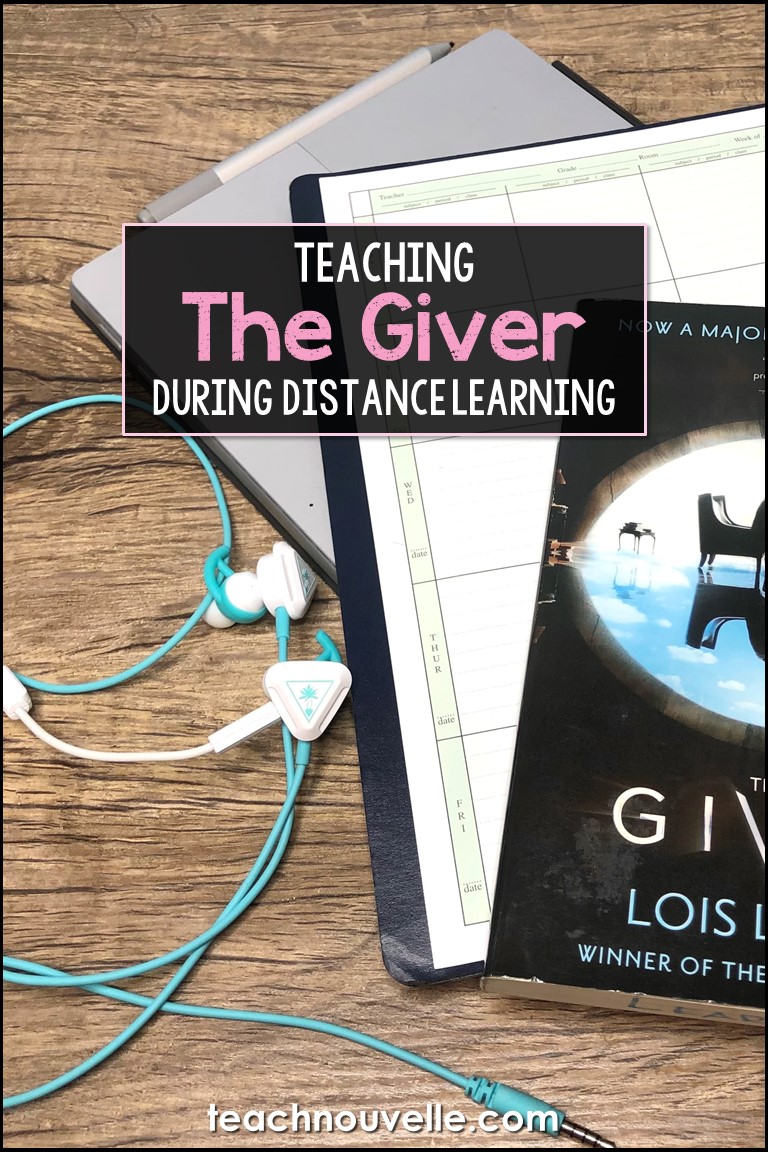
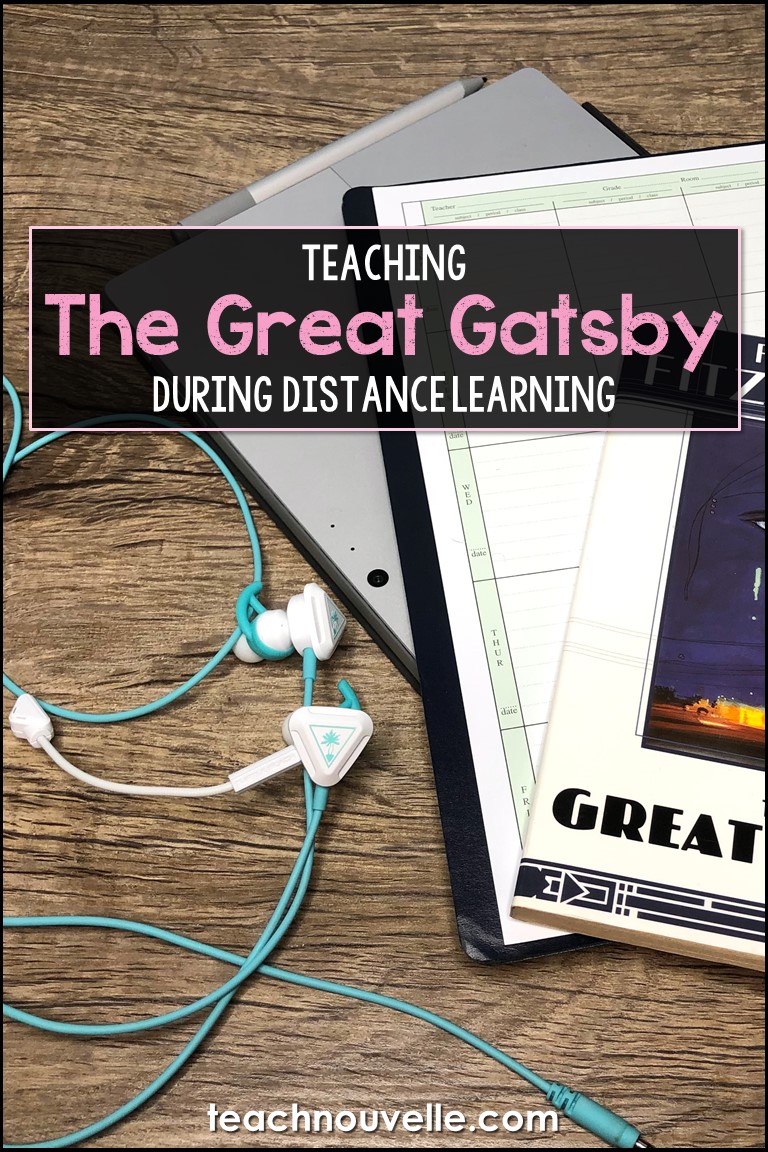
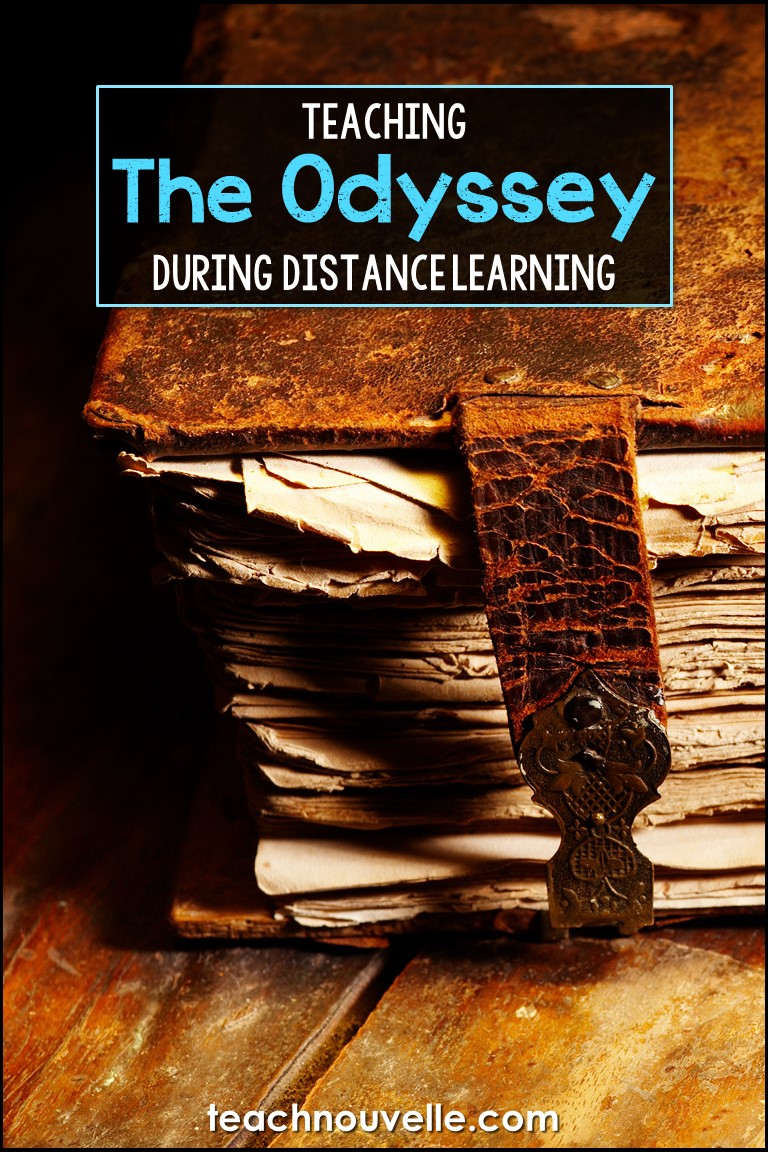
Closing comments
Distance Learning: The Giver, The Great Gatsby, and The Odyssey
I hope you found this post helpful. I know it’s challenging to teach any of these classics during distance learning, but your students are so lucky to have you!
The ideas I shared today are only a small part of a larger project that I’ve been working on with Dr. Sheila Frye (from Teaching Literacy) called “Rethinking the Classics” to help teachers find supplemental texts and curriculum updates.
So far, besides The Giver, we have covered Romeo & Juliet, The Odyssey, The Outsiders, The Great Gatsby, To Kill a Mockingbird, and we have many more to come.

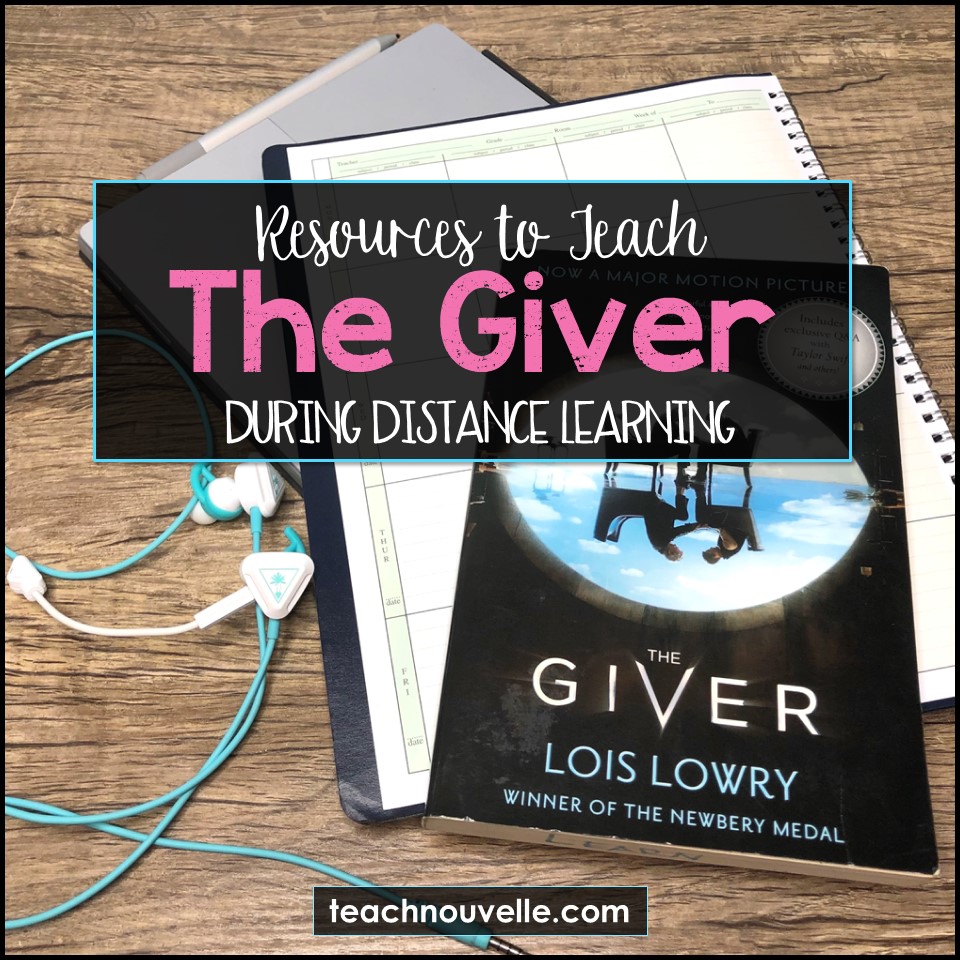
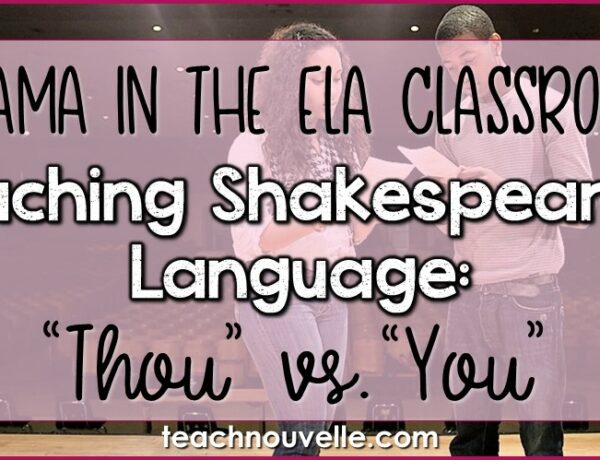

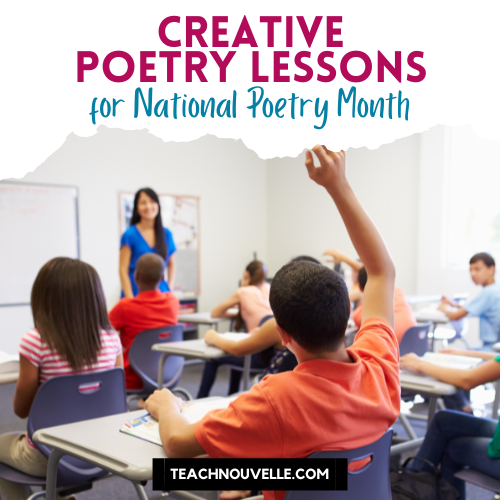
No Comments